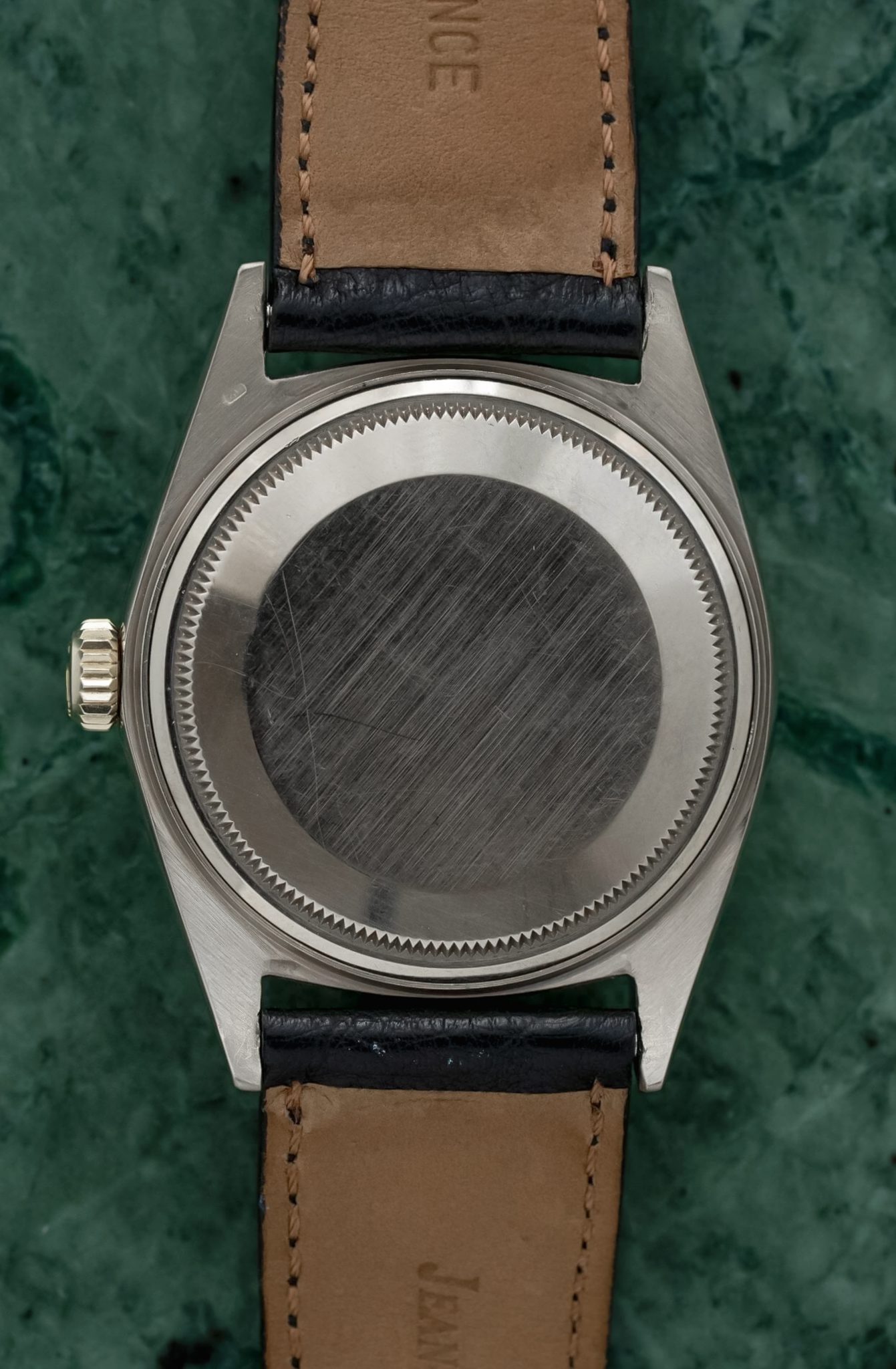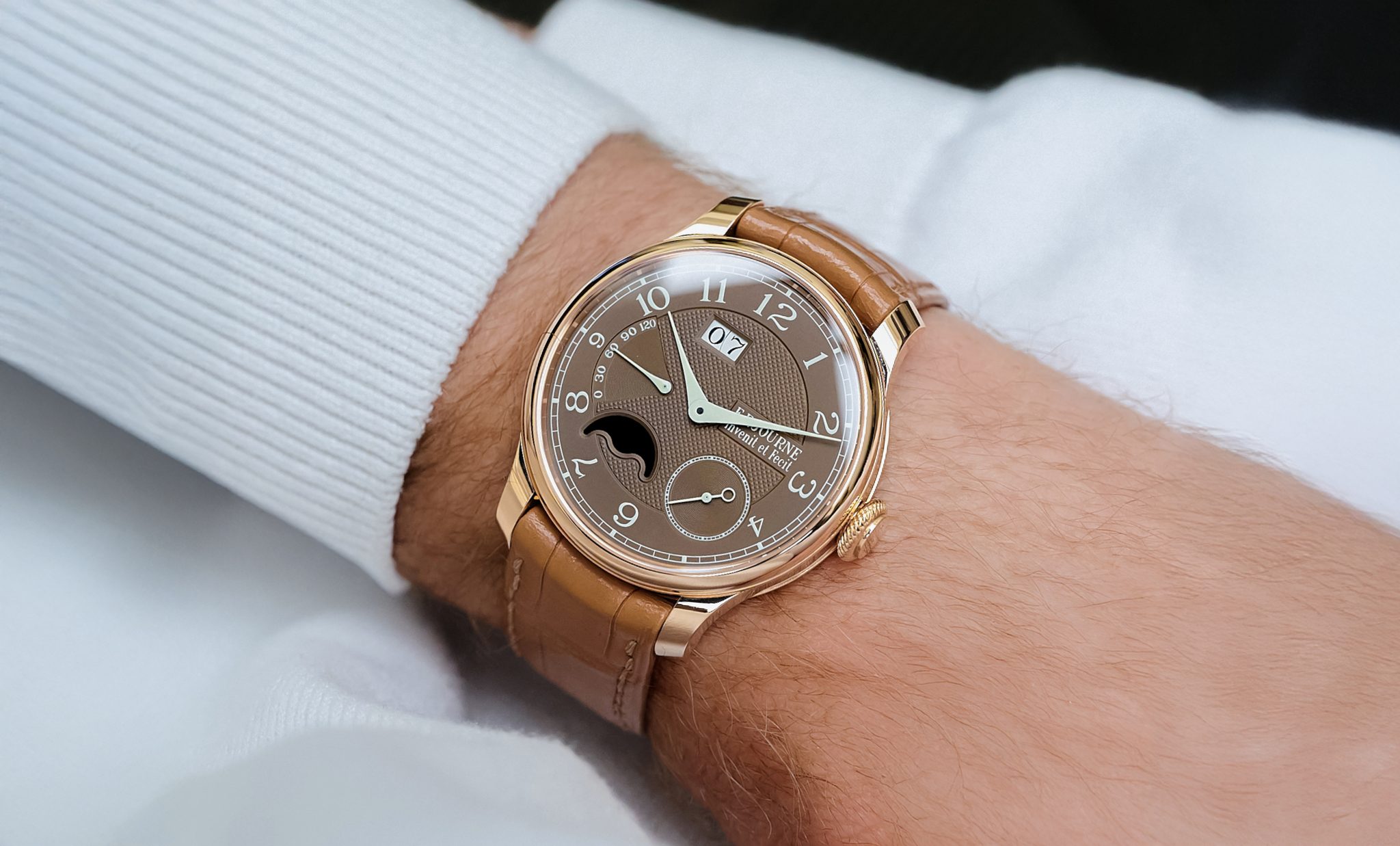
‘Japan No Lume’ 1803 Rolex Day-Date
Hardstone dials are all the rage these days. Day-Dates are synonymous with onyx, lapis, and jasper. But in the earliest days of the Day-Date, there weren’t stones. There were Stellas. And before there were Stellas, there were gilt pie-pans. An early Day-Date in white precious metal is just about the ultimate in discreet opulence as far as vintage is concerned. And the 1803, if you’re willing to forgo the equally storied President bracelet, is a simply outrageous value in the market today—and only because Rolex made a few, if Rolex only made 100 of these they’d be just as valuable as a 6200 King Sub. A comparable mid 60s Explorer is twice as valuable today. But they both wear suede or leather like Mick Jagger on a Tuesday in 1972.


But as you may expect by now here, this one has a bit of extra story. The 1803’s hallmark is a ‘pie-pan’ shaped dial, which did not survive the transition to 18038 in 1978. But you’ll note there’s no tritium on it. In the 60s and into the mid 70s, many Eastern countries and particularly Japan had strict import laws regarding luminescent or possibly radioactive materials of any kind. Tritium was a no-go. Rolex produced dials and non-luminous hands for this part of the world, which means that while there isn’t any golden pip there’s also less to go wrong over time. Rather confusingly, Rolex dial blanks were often still printed T SWISS T, but it is entirely correct for examples with non-luminous dials and hands to still bear tritium signatures, just as is the case in most stone dials as well. Rolex would batch print dial blanks, not distinguishing which were to be lumed and which were not. They’re becoming known as the ‘Japan No Lume’ dials, and yes, this one’s coming out of Tokyo if you were wondering. And as bonus points in trivia, Japanese imports were so very tricky, that there are some made in Japan President bracelets as well, engraved as such, which Rolex created to circumvent precious metal import tariffs.


On value, there was a time when I believed the 10K USD white gold Day-Date was a past time, never to be seen again. But we’re there now at 9-14K-ish without bracelet and 16-19K-ish with, assuming a standard dial dependent on condition. The 1803 can just as easily be a 100K watch, it’s a reference that is made in the details. But while it’s often the high flying Stella or Oman dials that we talk about here, I just felt it was worth advocating for the base model. Because it’s a massive amount of history, style, and significance for not as much as you might expect. Like a rental car is the actually the fastest car in the world for all practical purposes, a fantastic but base Rolex reference can easily be the most fun. No complicated investing or fragile stone. You can bond with it, without worrying about an exit at any point when you notice that extra scratch. Just buy it, wear it into the ground, and love it. Isn’t that what watches are for? Or is it just investment schemes and peacocking these days, or flexing, as the kids call it? Asking for an old, cynical friend.
This Day-Date is in good overall shape. The case has seen a touch up given the lugs, but it’s still quite relatively strong and not a serious detraction like it could be. The dial is undamaged, with a light champagne patina on the lovely soleil finish. All text is well-preserved. It comes with a steel Rolex pin buckle, which does make a difference for those who need the details, watch only from a well-regarded Japanese retailer.








